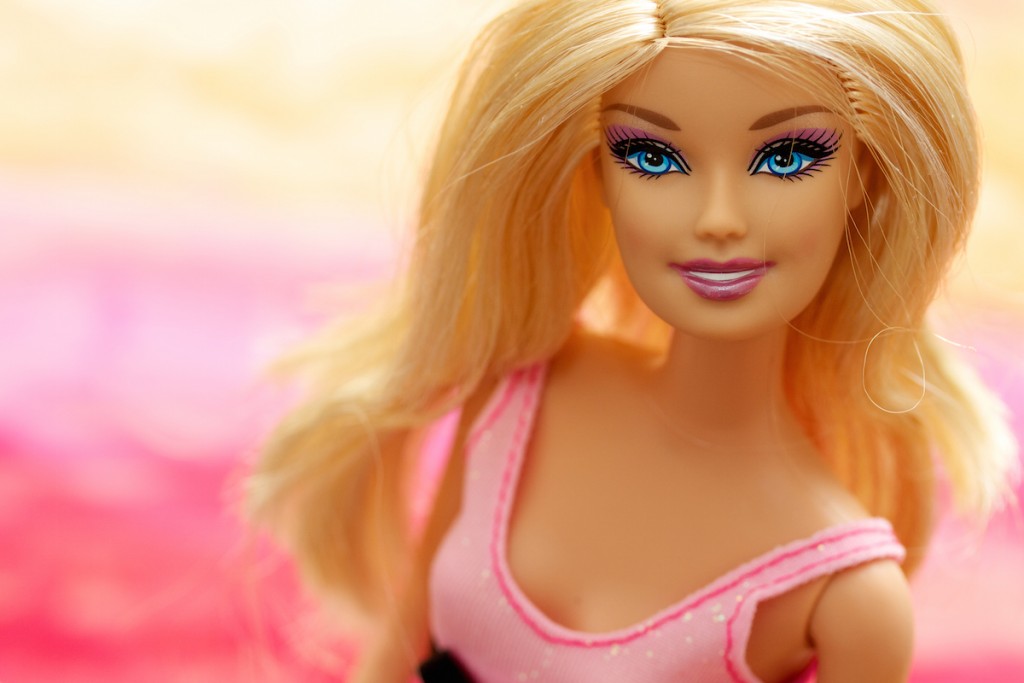Barbie graced the cover of a recent issue of Time Magazine with the headline ‘Now can we stop talking about my body?’ The new Barbie looks markedly different with a rounder and pronounced tummy, butt and calves. She also comes in two new shapes other than curvy—tall and petite.
Is the new Barbie still Barbie?
Barbie has been pronounced politically incorrect for some time and losing out on sales to dolls representing stronger female characters so I understand why Mattel has rolled out these new Barbies. But I’m having trouble understanding Barbie’s revamped identity. Who is Barbie now if not a svelte blonde that most girls can only aspire to be? Is the new Barbie still Barbie?

Despite her shortcomings, including having an anatomically impossible figure and being bad at math, she was clear in who she was, understood by fans and detractors alike. Now with a choice of 7 skin tones, 24 hair styles and 22 eye colors in four different body types, all named Barbie, it seems rather confusing though kids pointed to the old Barbie just the same when asked to identify Barbie.
It’s not that I am against the new Barbie; I think it’s great that girls can see someone who looks a bit more like them in the toy section because it’s important to be able to see yourself and feel affirmed. My youngest sister used to draw herself as a blonde (she has black hair) as a little girl, having learned at a young age that being pretty in America meant looking like the Disney Princess Cinderella or Barbie. We never got her a Barbie doll though we did buy her an Asian Bratz doll.
Will the new Barbie lead to more sales?
Since Mattel released the Barbie in a variety of skin tones and hairstyles last year, before the huge makeover this year, its quarterly sales rose for the first time in more than two years. Still, I wonder if this curvy/petite/tall Barbie makeover will result in significantly increased sales in the long run, after the hype has died down; I’m not yet convinced that the new Barbie will attract an entirely new demographic of consumers.
The people that would have bought their kids Barbies anyway will do so; it’s just that now they will buy them feeling less guilty, if they felt any guilt before, about reinforcing destructive stereotypes of the ideal woman. But those parents would have purchased the old Barbie just the same. At the least, doll collectors, speculated to be in excess of 100,000 people, will have many more Barbies to acquire now with the increased options.
Parents wanting to empower their kids are going to skip gendered toys altogether, especially Barbie, and buy something like Legos.
If Mattel is hoping to appeal to a new base of conscientious parents wanting to empower their daughters (or sons), I don’t think making Barbie slightly chubbier, taller or shorter is the key to their wallets. Like my family buying my baby sister the relatively healthier-looking Asian Bratz doll, it’s possible the novelty in the context of the largely unavailable diversity of dolls will encourage adults indifferent about dolls to purchase ones that look like their kids. But my feeling is that many of those grown-ups are going to skip Barbies and gendered toys altogether and buy something like Legos. It may be that Mattel is targeting a group with a relatively low level of capturability.
Will the new Barbie appeal to kids? Sure—but so did the old Barbie.
Will the new Barbie appeal to them more than the old Barbie? I’m not sure.
Barbie, who are you?
What is the Barbie brand? Have I been misunderstanding the brand as being encapsulated in a blonde bombshell clothed in pink? Is it really about believing in girls and their limitless potential as the Barbie website mentions?
I have to say, I had a couple Barbies growing up and limitless potential was not a message that ever crossed my mind.
I have mostly questions, no answers, for my childhood companion. Barbie, who are you? Do I even know you anymore?
Photo credit: “Barbie ( reprise )” by Tracheotomy Bob is licensed under CC BY 2.0


Ask for help.
We are kind, thorough and ready when you are. You just need to ask.